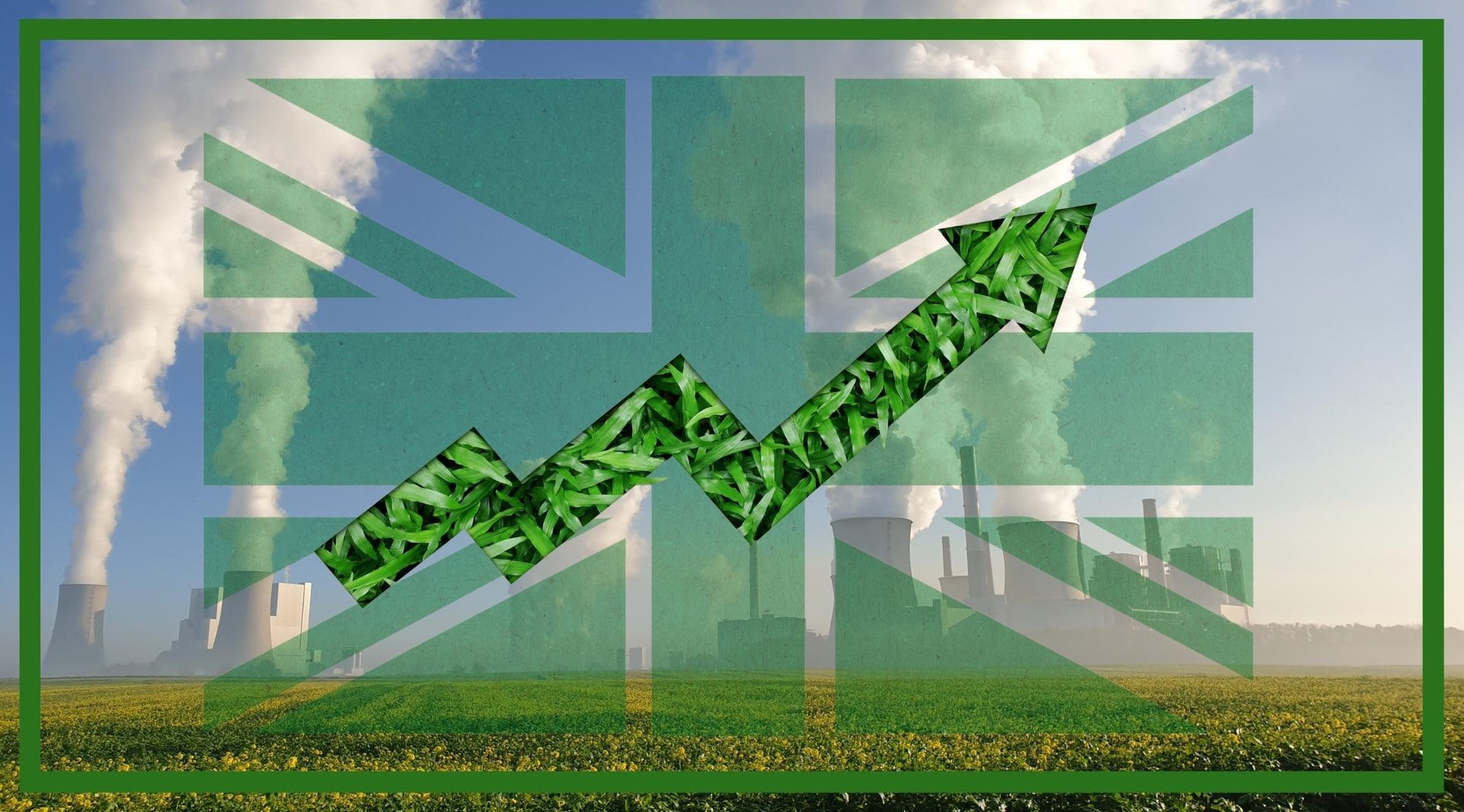Just months after the end of COP26, where it was announced that the UK would shut down most coal-fired plants in line with its commitment to end coal generation by 2024, the UK Government has now decided to keep these open and approved a new North Sea oilfield. The UK Government claims this has been done with the aim of providing energy during the winter, due to the urgent need to economically isolate Russia and divest away from Russian oil and gas. However, these decisions put into question the legibility of the UK’s Green Bonds. Is the UK Government ready to quickly transition towards the renewable energy sector?
North Sea Abigail oil field plan approved despite climate goals https://t.co/qVVfowUvQD
— Guardian Scotland (@GdnScotland) February 1, 2022
In June 2021, some concerns around the UK’s Green Bonds arose as specialists questioned where the proceeds were being spent. William de Vries, from Triodos Investment Management BV who have been specialising in sustainable finance for years, stated that the UK’s Green Bond was the first bond he considered not to be green enough according to Triodos’s standards. Triodos has set out its own Green Bond Framework which details how the proceeds of its own green bonds are to be used. The framework sets out how its own green bonds’ proceeds are to be spent on other green bonds which meet an “Eligibility Criteria.” Triodos already invests in sovereign green bonds issued by Italy, Germany, and France but the UK Government’s plans to spend its proceeds on carbon-capture technology and blue hydrogen do not meet Triodos’s “Eligibility Criteria.”
He highlighted the fact that the UK was planning to invest in the burying of carbon dioxide, even though many activists believe this activity could actually slow down the UK’s transition to a net zero economy. As De Vries stated back in June 2021, the problem with these kinds of projects is that they are perceived as carbon reducing when in fact they are not, the exact definition of greenwashing.
As Mark Carney, former governor of the Bank of England, stated in a recent interview with the United Nations, the talk around climate change has now shifted from a risk to an opportunity. This explains the sudden popularity of these types of investments but also the speculation around them.
How can one be sure that climate change is truly an opportunity? According to a recent study performed by Columbia University and the London School of Economics, comparing the ESG performance of US companies in ESG fund portfolios and non-ESG portfolios, compliance records in terms of labour and environmental rules of the companies in ESG funds were found to not necessarily outperform the non-ESG portfolios’ records.
Furthermore, is ESG just an excuse for poor performing investment vehicles? As highlighted in a recent paper by Ryan Flugum and Matthew Souther, from the University of North Iowa and the University of South Carolina respectively, fund managers have a tendency to talk about the ESG aspects of their funds when the fund is found to be underperforming financially. But when the fund is performing well, ESG factors seem to disappear from the conversation.
The integration of ESG factors within the finance sector has seen a recent acceleration, especially within Europe, where last year the number of ESG-related assets surged by 200%, as more and more investments labelled themselves as ESG friendly. Even Carney himself has jumped on the opportunity, as he heads a global transition fund at Brookfield Asset Management. His fund aims to invest into “projects which will accelerate the global transition to a net-zero carbon economy.” This aim is pretty ambiguous and does not put in place as many limits to the type of investments the fund can make as commonly expected. This target also gives room to possible loopholes. For example, this particular fund could potentially invest in a portfolio encompassing both natural-gas plants and renewables. This would be allowed as this type of project would give way to opportunities to develop the renewables sector. However, this type of investment has not yet occurred within the fund.
Carney has managed to raise an extraordinary $15 billion into the fund already. So far, $2.5 billion is to be spent on acquiring solar power and battery developers in the US and Germany and a partnership to develop solar and battery-storage projects in the UK.
Former Bank of England Governor Mark Carney raises $15 billion for a green energy transition fund https://t.co/vHqoWgdybA
— Bloomberg UK (@BloombergUK) June 22, 2022
One might ask, are these investments vehicles just a way to raise large funds quickly? To answer that question, one needs to understand why these types of investments are allowed to advertise themselves as being “green” or “sustainable.”
The definition of ESG reporting is yet to be decided on globally and large inconsistencies exist, especially between Europe and the US. Although the definition may not be clear and consistent, investors still do feel a sense of warmth when they invest their well-earned money into these ESG focused investments. This sudden rise in popularity around ESG focused funds has caused a large shift in the demand curve, as individuals become conscious of the changes they can make to the world through these vehicles. However, David Gorgone, portfolio manager at Pictet Asset Management, states that supply is not following the demand, in particular “supply is too small to be able to build a proper, ESG-only portfolio.”
Stricter ESG rules needed to stamp out greenwashing, City minister warns https://t.co/4WVl6XIuSS pic.twitter.com/jqPpqvfk82
— City A.M. (@CityAM) July 18, 2022
As more and more governments and institutions issue green bonds or sustainable funds, this leaves plenty of room for the phenomenon of greenwashing. Greg Fayvilevich, senior director and global head of Fitch’s fund and asset manager ratings group, states that the way around greenwashing is to improve disclosures, as well as getting third-parties involved in overseeing these types of investments. For example, Aviva has recently appointed an ESG specialist from BlackRock who will be responsible for the oversight of Aviva’s ESG funds, allowing for an external and bias-free evaluation of the fund’s strategy. This appointment has been done voluntarily by Aviva to increase investor confidence, but perhaps there is a need for mandatory involvement of third-parties for every ESG fund.
Transparency around how proceeds are being spent is truly important. As stated by Carney, the private finance sector is being judged and needs to show its progress on the transition to net zero.
In practice, green bonds must set out their objectives through a unique framework. The framework must then be followed to establish how the proceeds will be used. At the time of launching the UK’s Green Bond in September 2021, the UK Government’s Green Financing Framework was drafted, setting out both environmental and social objectives such as zero-emission buses and food security for the Green Bond. The whole framework is aligned with the four core components of the International Market Capital Association Green Bond Principles. One of the components being titled “Reporting,” and requiring that regular updates are given to investors.
Further down within the framework, one can find some high-level objectives which are then broken down into smaller sub-objectives. Each overarching objective is aligned to at least one United Nations Sustainable Development Goal and is considered a sustainable activity as it is in line with the EU Taxonomy’s definition of such activity. These elements of the framework increase investor confidence and allow the UK Government to label the bonds as ESG friendly.
Investors queued up to buy the new 12-year bond, placing £90bn of bids within the first hour after order books opened, according to bankers working on the deal https://t.co/2qcCb8rzWV
— Financial Times (@FinancialTimes) September 21, 2021
Within the framework, one objective called “living and natural resources” states that the UK Government is going to plant trees to absorb carbon dioxide. However, what happens if those trees die or are cut down? It is easy for the UK Government to state their objectives for the proceeds of the fund, but this only shows one point in time. Updates need to be provided to illustrate the trajectory of the funds up until maturity of the bond.
But, there are other ways in which investors can find confidence within the bond. For example, most investors of the UK Green Bond have come from pension schemes where there has been a recent shift in the consideration of ESG factors within the investment decision making process. Large UK pension schemes are now required to publish reports regarding ESG factors, such as carbon metrics and climate-related risks, within the scheme. Further, through the Task Force on climate-related Financial Disclosures, investors have access to a whole new catalogue of reports, making them more aware of the actual ESG performance of the bond.
In order to avoid greenwashing a shift needs to occur on the reporting side, more third parties need to be involved in reporting to avoid manipulation and bias from governments and institutions. Governments should aim to provide regular updates to current and potential investors to restore confidence. With a new Prime Minister in line, can we hope for positive change from the UK Government? One cannot forget that ESG is more than just environmental objectives. What about social objectives like affordable housing, should more importance be placed on these within the Green Bond’s framework?
Author: Jennifer Michel
#COP26 #ClimateChange #Energy #GreenBonds #Greenwashing














